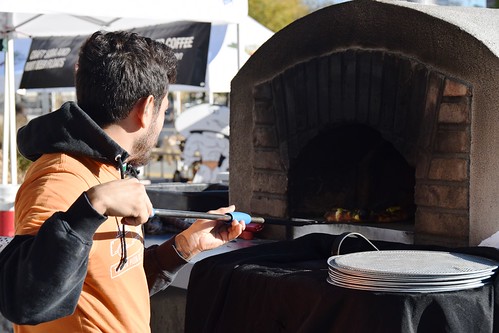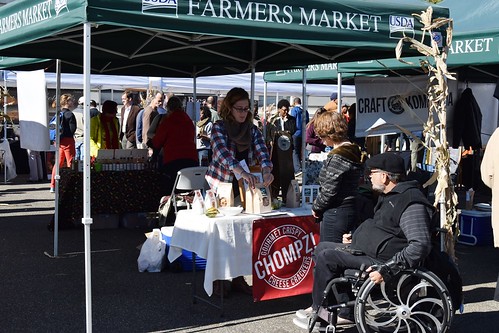
The USDA Farmers Market, next to the Department’s headquarters and steps from the National Mall in Washington, D.C., is a “living laboratory” for identifying and testing strategies to help support local and regional food systems.
To mark the 20th anniversary of the market, my colleagues and I at USDA’s Agricultural Marketing Service (AMS), which manages the weekly Friday market, tried a few new approaches during the 2015 season. Our goals were to make the market more successful for vendors and more enticing to visitors.
For example, we opened the market a month early--in May instead of in June. We also redesigned the layout of the market, allowing us to more than double the number of vendors from 14 to 32.
A variety of farmers and other vendors in the Chesapeake Bay region applied to participate in the market. This year, the market hosted the same 26 core vendors each week and filled the remaining spaces by rotating 19 additional vendors. This system also allowed 15 new entrepreneurs and small food businesses from Union Kitchen, a DC-based food incubator, to join the market.
One vendor success story is Timber Pizza, which first participated in the USDA Farmers Market in 2014. Owners Andrew Dana and Chris Brady used lessons learned in 2014 to build a more successful operation during the 2015 USDA Farmers Market season. For example, in 2014, they took advantage of the unique characteristics of the market such as bartering with farmers (a pizza in exchange for seasonal produce), soliciting open feedback from market customers, and testing variations of toppings on individual-sized pizzas.
This year, Timber Pizza used local fresh herbs, seafood, cheeses, meats, and prepared ready-to-eat foods from the other market vendors to enhance their rotating pizza menu.
After just two seasons at the USDA Farmers Market, this small business established direct relationships with farmers, hired five full-time staff and expanded to selling at four farmers markets in the region. Timber Pizza’s overall revenue grew 100% from 2014 to 2015, with an 80% increase in revenue at the USDA Farmers Market alone! In June 2015, they announced plans to open their first brick and mortar location in the Petworth neighborhood of Washington, D.C.
For first-time vendor and member of Union Kitchen Emma Shaver (of Emma’s Bakeshop), the 2015 market season was an ideal opportunity to use sales data and conversations with market visitors to test new products and refine her business plan. One key finding was that people were less interested in sweets and more interested in her savory cheese crackers. Emma took this lesson to heart – at the end of June, she officially launched Chompz Gourmet Crispy Cheese Crackers at the market.
Another experiment during the 2015 season was inviting food trucks to the market for the first time through our partnership with the DMV Food Truck Association.
One of those trucks was the Dirty South Deli, specializing in sandwiches. Founders Will Fung and Jacob Hunter noted that at first other vendors were skeptical of a food truck at a farmers market, but it became clear that they were another local business buying and serving local products. Customers reacted positively, especially tourists, demonstrating that food trucks can be successfully incorporated into a farmers market.
These are just three examples of vendors who used the USDA Farmers Market to develop local food businesses. We know from AMS’s 2014 survey of nearly 1,400 farmers market managers listed in the USDA’s National Farmers Market Directory that farmers markets across the country play an important role in this kind of local economic development. Over 20% of farmers markets helped incubate new agribusinesses by sharing facilities, retail space, and/or providing technical assistance.
Our “living laboratory” at the USDA Farmers Market shows that a market can provide a low-cost and flexible way for farmers and other vendors to test consumer demand and preferences. We hope that the managers of the more than 8,500 farmers markets around the country will use these lessons to help expand their own markets for local farmers and food entrepreneurs.



